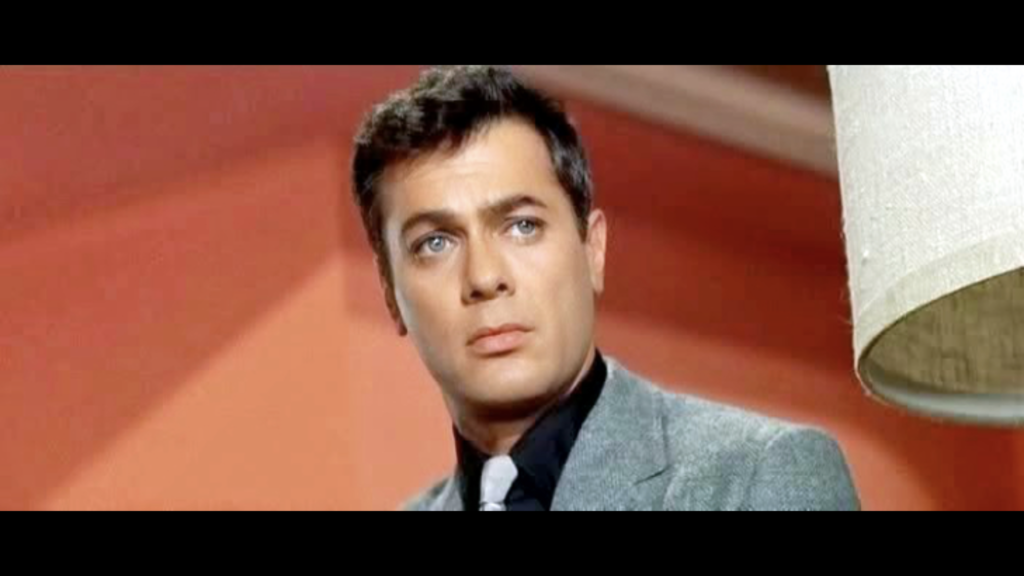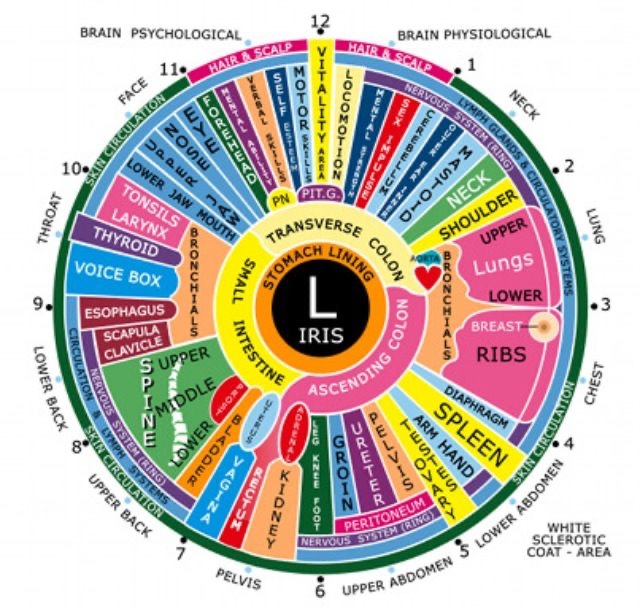When you meet someone new, you can look into their eyes to see an indication of the whole person. Are their eyes bright and clear or muddy looking? What is the colour of the eye? What type of feeling do you get looking at their eyes? What do you see in their eyes?
Remembering Tony Curtis and his incredibly blue eyes yesterday, prompted me to write about the wonders of the eyes, in particular the iris.

Iridology is the study of the iris. It has been practiced for many years and started in 1813 in Babylon. Around 1861, a doctor breaking a leg of an owl during catching it from the backyard, noticed after the broken leg had healed, the iris had new markings on it. Similarly, another event from another doctor in a different country, noticed his eye was changing colour from a treatment he was receiving for a vaccine injury. In 1893, he published an atlas of the eye called “Diagnosis from the Eye” and is available on google books.
Good quality images are important to assess the iris. The structure of the iris is what the Naturopath looks at along with the colour of the eye. There are 2 colours of the eye normally. That is blue and brown. Everything else in between has a wash over the iris changing its colour eg: a yellow haze or opaque haze may make the eye look green, although there can be a mixed colour of brown and blue called a “biliary”. The markings of the iris comes from both parents, the majority of signs from the mother are in the right eye, and the father in the left.
Looking from the outside in you will see the overall structure of the iris, which shows the skin zones including the circulation and lymphatic system around the outside. As you work toward the pupil, you will see the areas of the organs, muscles, structure (bones). The nerve wreath, or spinal nerve wreath, is next, and this would be one of the first things a naturopath would look at. This wreath surrounds the pupil and represents the autonomic nervous system which is the self regulating control of the body. This system monitors body functions without conscious commands, such as breathing, movement of the bowel, nerve supply to other organs and the ability that makes us either stand up or fall over. The nerve wreath should be around 1/3 of the volume of the iris from outside of the pupil. I bet you are thinking about looking in the mirror right now.

Inside this nerve wreath area, are the intestines and stomach, then leading down into the dark pupil. You can think of it as a long pipe looking down at the pupil at the end.
The Naturopath takes note of all these areas, which can show both history and current issues such as lymphatic congestion, circulatory issues, vitamin deficiencies, and nervous tension in areas. Certain markings of colour, wash and depth are also noted, as these show how deep the issue is in that particular organ. In our clinic practice, the patients we perform an iridology report for, are matched up to their symptoms and presenting complaints. It still amazes me the accuracy of the art of iridology.
Tony Curtis who I mentioned above had amazing blue eyes. Blue eyes have a lymphatic constitution, and these people can be known to have lung issues if not looked after correctly. Tony was a heavy smoker and in the end, his history of lung complaints is stated as the reason for his passing. Iridology is not used to give a destiny of life or death for a client, but it can inform the client of their strengths and weaknesses, and the areas that may need extra support before an issue arises. This includes both physical and emotional help.
Generating a report for a client is time consuming, but we love to do them here. So if you are interested in having one done, please book online for the “Iridology Consultation”. A good picture is required, so if you cannot provide them yourself, you can make a time for them to be done here in clinic (Ocean Shores NSW), We would love to see you.
There are also some people offering iris photos just for fun at the local markets if you have one near by.

